#photos from 1920s and 1930s
Text

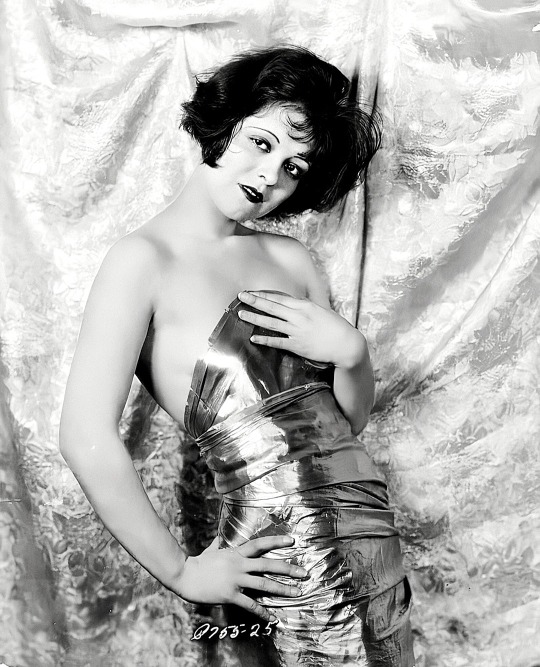
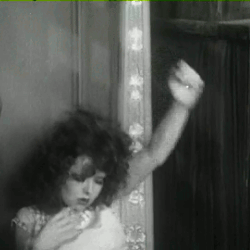


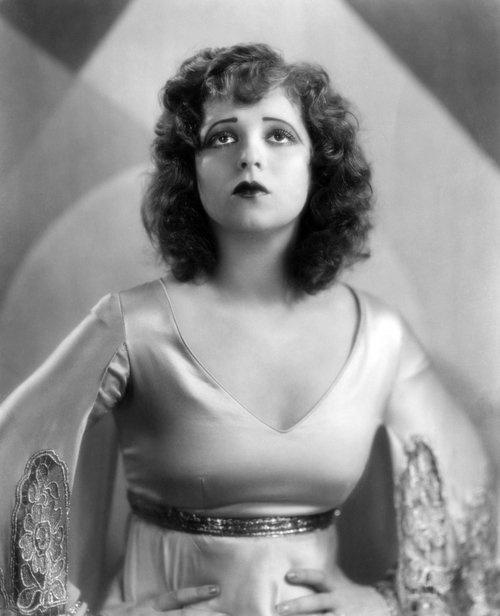

Happy 118th Birthday To The Fabulous And Original
IT Girl Clara Bow (Born 29th July 1905)
#clara bow#birthday girl#born 29th july 1905#silent screen beauty#silent screen stunner#beautiful american actress#the original it girl#photos from 1920s and 1930s#gifs from 1920s#hollywood legend#silent hollywood#old hollywood
62 notes
·
View notes
Text

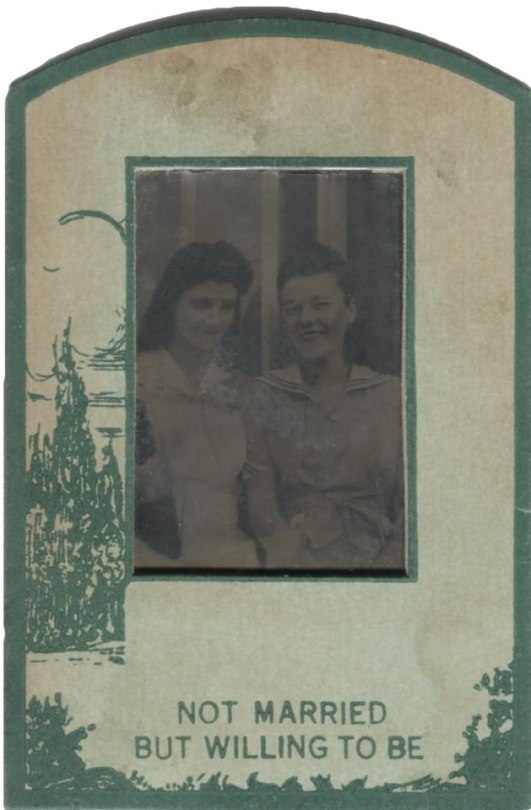
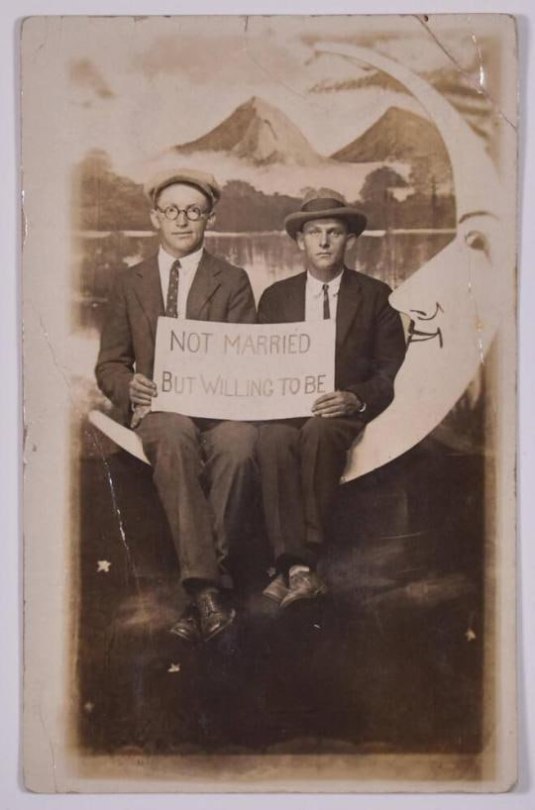
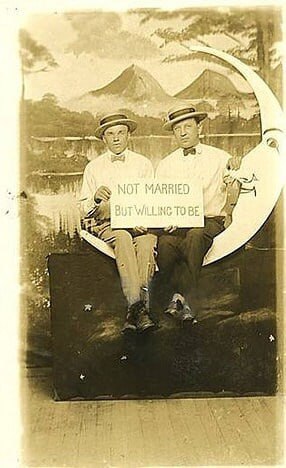
Not Married, But Willing to Be: A Small Collection
Some people believe that these couples only looked for partners (of the opposite sex, of course), or that they were siblings. That may be, but another picture with the two boys from the first photo – both featured in 'Loving: A Photographic History of Men in Love' – hints at a different story.
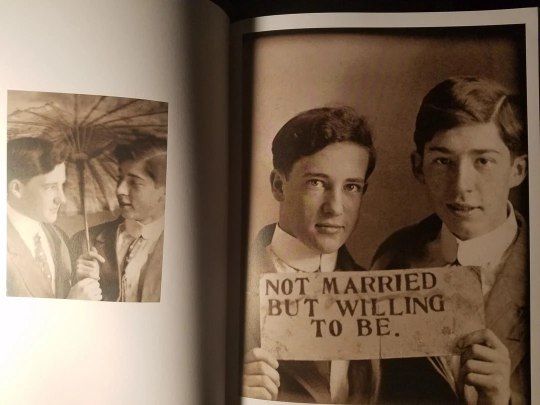
[Sources: 1, 2, 3, 4, 5]
#also love how the two last photos are from the same studio#can't help imagining a studio frequented by queer people and maybe run by them#queer history#gay history#lesbian history#1920s#1930s#1940s#wlw love#sapphic love#gay love#blog: history
108 notes
·
View notes
Note
CLEOS HAIR IN THE MAFIA AU MMMMMMM
heheheheheh it's pretty similar to what mumbo has but like more wavy and i like it a lot myself
#it's supposted to be the 1920s but her haircut is referenced from a photo of the 1930s but don't tell anyone#1920s mafia au#graverobber!cleo#anon ask answer
56 notes
·
View notes
Text
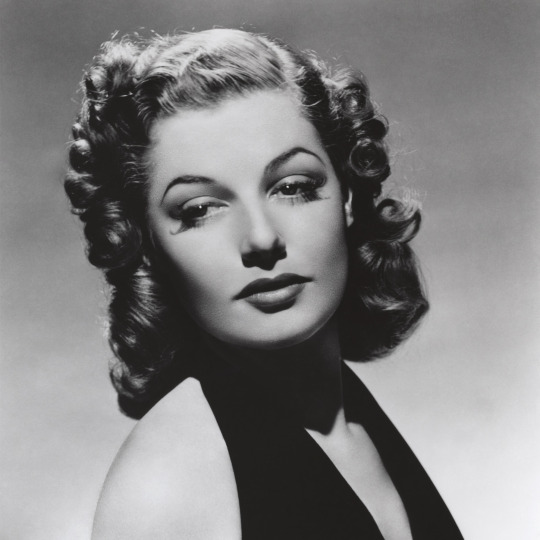
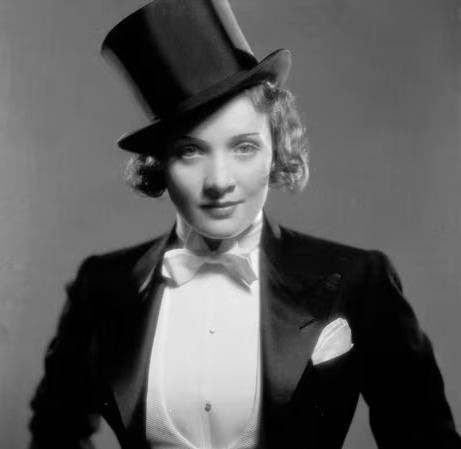
Propaganda
Ann Sheridan (I Was a War Male Bride, City for Conquest, The Man Who Came to Dinner)—she was called 'the oomph girl' and i think that deserves a vote
Marlene Dietrich (Shanghai Express, Witness for the Prosecution, Morocco)—its marlene dietrich!!!! queer legend, easily the hottest person to ever wear a tuxedo, that hot hot voice, those glamorous glamorous movies.... most famously she starred in a string of movies directed by josef von sternberg throughout the 1930s, beginning with the blue angel which catapulted her to stardom in the role of the cabaret singer lola lola. known for his exquisite eye for lighting, texture, imagery, von sternberg devoted himself over the course of their collaborations to acquiring exceptional skill at photographing dietrich herself in particular, a worthy direction in which to expend effort im sure we can all agree. she collaborated with many other great directors of the era as well, including rouben mamoulian (song of songs), frank borzage (desire), ernst lubitsch (angel), fritz lang (rancho notorious), and billy wilder (witness for the prosecution). the encyclopedia britannica entry im looking at while compiling this propaganda describes her as having an “aura of sophistication and languid sexuality” which✔️💯. born marie magdalene dietrich, she combined her first and middle names to coin the moniker “marlene”. she was a trendsetter in her incorporation of trousers, suits, and menswear into her wardrobe and her androgynous allure was often remarked upon. critic kenneth tynan wrote, “She has sex, but no particular gender. She has the bearing of a man; the characters she plays love power and wear trousers. Her masculinity appeals to women and her sexuality to men.” in the 1920s she enjoyed the vibrant queer nightlife of weimar berlin, visiting gay bars and drag balls, and in hollywood her love affairs with men and women were an open secret. she was an ardent opponent of nazi germany, refusing lucrative contacts offered her to make films there, raising money with billy wilder to help jews and dissidents escape, and undertaking extensive USO tours to entertain soldiers with an act that included her a playing musical saw and doing a mindreading routine she learned from orson welles. starting in the 50s and continuing into the mid-70s she worked largely as a cabaret artist touring the world to large audiences, employing burt bacharach as her musical arranger.
This is round 1 of the tournament. All other polls in this bracket can be found here. Please reblog with further support of your beloved hot sexy vintage woman.
[additional propaganda submitted under the cut.]
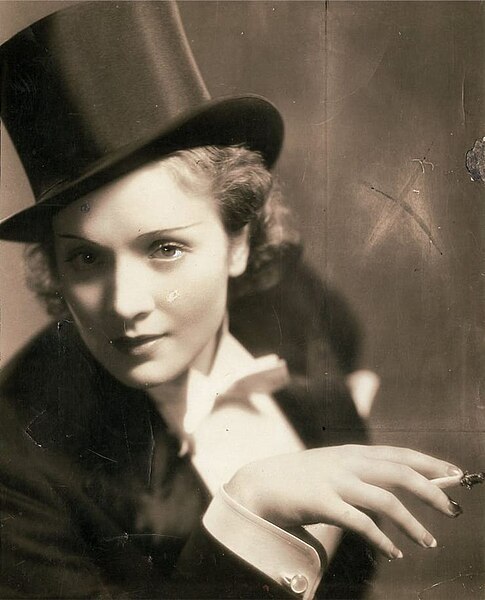
"ms dietrich....ms dietrich pls.....sit on my face"
"First of all, there are those publicity photos of her in a tux. Second of all, I have never been the same since knowing that she sent copies of those photos to her Berlin lovers signed "Daddy Marlene." Not only is she hot in all circumstances, but she can do everything from earthy to ice queen. Also, she kept getting sexy romantic lead parts in Hollywood after the age of 40, which would be rare even now. She hated Nazis, loved her friends, and had a sapphic social circle in Hollywood. She also had cheekbones that could cut glass and a voice that could melt you."
"Did a bunch of humanitarian work during ww2, pretty sure a shot of her from Shanghai express was the inspiration for one of queens album covers and also her in the suit in Morocco (1930) CHANGED LIVES. I’m sure she’s already been submitted but I wanted an opportunity to submit one of my favourite pictures of her for the poll"

Bisexual icon, super hot when dressed both masculine and feminine, lived up her life in the queer Berlin scene of the 1920s, central to the 'sewing circle' of the secret sapphic actresses of Old Hollywood, refused lucrative offers by the Nazis and helped Jews and others under persecution to escape Nazi Germany, the love of my life
Her GENDER her looks her voice her everything
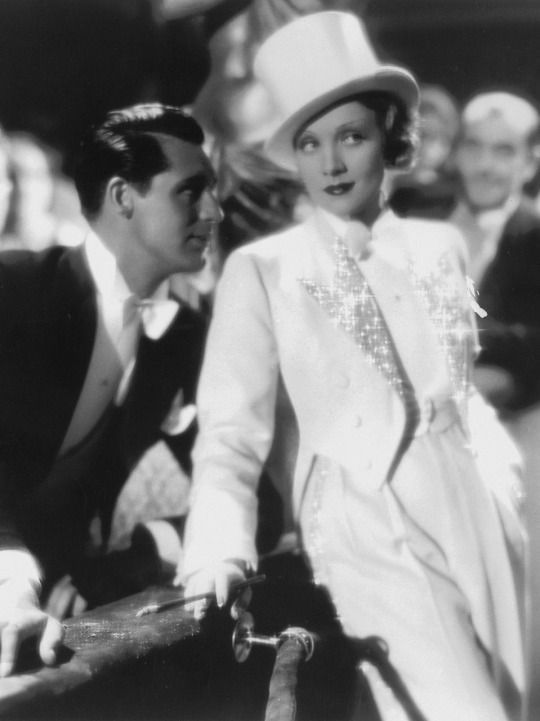
“In her films and record-breaking cabaret performances, Miss Dietrich artfully projected cool sophistication, self-mockery and infinite experience. Her sexuality was audacious, her wit was insolent and her manner was ageless. With a world-weary charm and a diaphanous gown showing off her celebrated legs, she was the quintessential cabaret entertainer of Weimar-era Germany.”
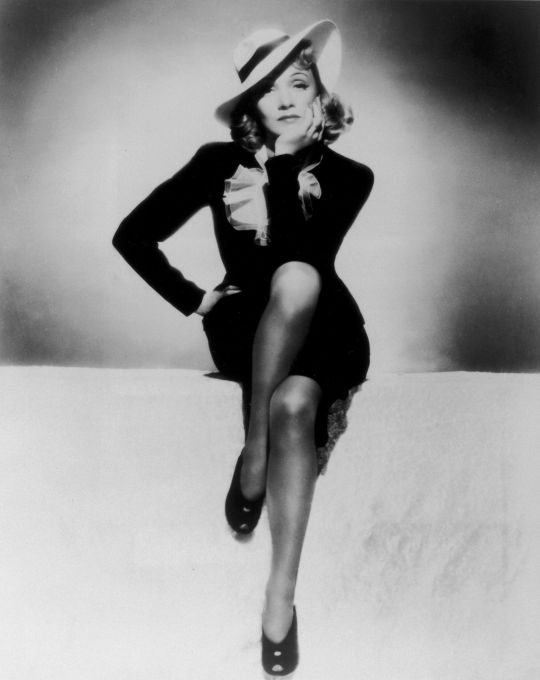
"The bar scene in Morocco awoke something in me and ultimately changed my gender"
youtube
"Her manner, the critic Kenneth Tynan wrote, was that of ‘a serpentine lasso whereby her voice casually winds itself around our most vulnerable fantasies.’ Her friend Maurice Chevalier said: ‘Dietrich is something that never existed before and may never exist again.’”
"Songstress, photographer, fashion icon, out bisexual phenom (notoriously stole Lupe Velez and Joan Crawford's men, and Errol Flynn's wife, had a torrid affair with Greta Garbo that ended in a 60-year feud, other notable conquests including Erich Maria Remarque -yes, the guy who wrote All Quiet on the Western Front- Douglas Fairbanks Junior, Claudette Colbert, Mercedes de Acosta, Edith Piaf), anti-Nazi activist. Marlene was a bitch - she had an open marriage for decades and one of her favorite things was making catty commentary about her current lover with her husband, and her relationship with her daughter was painful- but she was also immensely talented, a hard worker, an opponent of fascism and the hottest ice queen in Hollywood for a long time."
youtube
"She can sing! She can act! She told the Nazis to fuck off and became a US citizen out of spite! She worked with other German exiles to create a fund to help Jews and German dissidents escape (she donated an entire movie salary, about $450k, to the cause). She looks REALLY GOOD in a suit. If you're not convinced, please listen to her sing "Lili Marlene". Absolutely gorgeous woman with a gorgeous voice."
Gifset link
"Bisexual icon and Nazi-hater. Looks absolutely stunning in the suits she liked to wear. 'I dress for the image. Not for myself, not for the public, not for fashion, not for men'."
"would you not let her walk on you?"

298 notes
·
View notes
Note
I am very confused about the holodomor do you have any sources on anything regarding it?
For what I know the best literature on the topic is Whatcroft's Years of Hunger, but I haven't read it
Douglas Tottle's Fraud, Famine and Fascism is an introductionary read, it's very short (170 pages) and debunks a lot of the propaganda around the Holodomor, like photos from the 1920s famine used for the 1930s. It's not entirely correct on the chapter of Thomas Walker because the first american to talk about the famine was actually Gareth Jones, I already linked this article in another post
I think the most respectable position is that there was indeed a famine (some people call the famine a hoax but it's a very small number of idiots and I haven't seen a single serious communist say that the famine never happened. It did happen in fact, and it did not happen only in Ukraine. Jones stated that even close to Moscow you could not find bread), exacerbated by the kulaks resisting collectivization and a probably faulty managment of the famine by the Soviet institutions. If you want to take a more radical stance, then the famine was exacerbated by collectivization, but that does not define a genocide.
Famines were common in the Russian Empire (1891-92, 1899, 1905, 1901, 1906, 1911) prior to the industrialization and most of the famines that happened under Soviet rule were also exacerbated either by the civil war or as a result of the nazi genocidal campaign in Eastern Europe. The "holodomor" was the last big natural famine, the last major famine in the Soviet Union was the one in 1947, because of a drought exacerbated by the destruction of Eastern Europe from Nazi Germany.
Losurdo also talks about it in his book about Stalin
355 notes
·
View notes
Text

Art Deco detail of ventilation grille in the Chanin Building, completed in 1929.
From the Virginia Museum of Fine Arts:
Art Deco architecture and design and Precisionist painting and printmaking blossomed concurrently in the late 1920s and early 1930s; angular patterns, restrained color palettes, and pronounced linearity appear in both movements. A landmark of American Art Deco architecture, the Chanin Building was completed in 1929, rising fifty-six stories on the corner of East 42nd Street and Lexington Avenue in New York City. In this photograph, Andrew Bordwin highlights the building’s famous ventilation or convector grilles installed near the site’s three entrances. These vertically elongated grilles are bronze, but they appear silver in Bordwin’s black-and-white image. The ascending coils and rays themselves resemble skyscrapers, and Bordwin’s photograph demonstrates the lasting influence of Precisionist themes and aesthetics.
Photo: Andrew Bordwin via the Virginia Museum of Fine Arts
#vintage New York#1920s#Andrew Bordwin#Art Deco#architecture#Chanin Building#b&w photography#design#vintage NYC
327 notes
·
View notes
Text
Pluto's time period analysis
Posting this like a month late but here, spoilers for episode 83 of Nevermore
Disclaimer: this is all speculation, and nothing has been confirmed to be canon yet
I narrowed down the time period Pluto lived in to roughly 1923-1928 based on panels shown in episode 83, panels will be talked about in the order they're shown in the episode. Assuming Pluto's backstory plays out similar to the events in the Black Cat story, it's more than likely this is the year he had died as well.
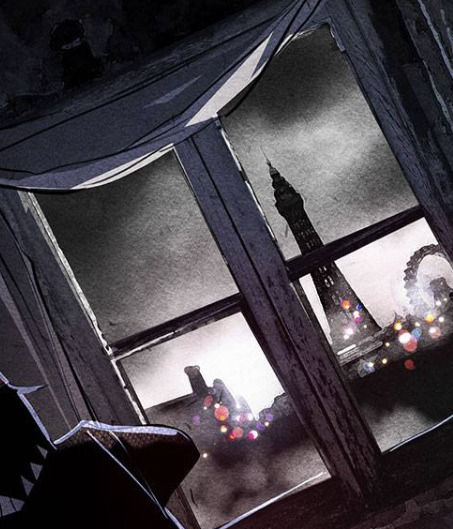
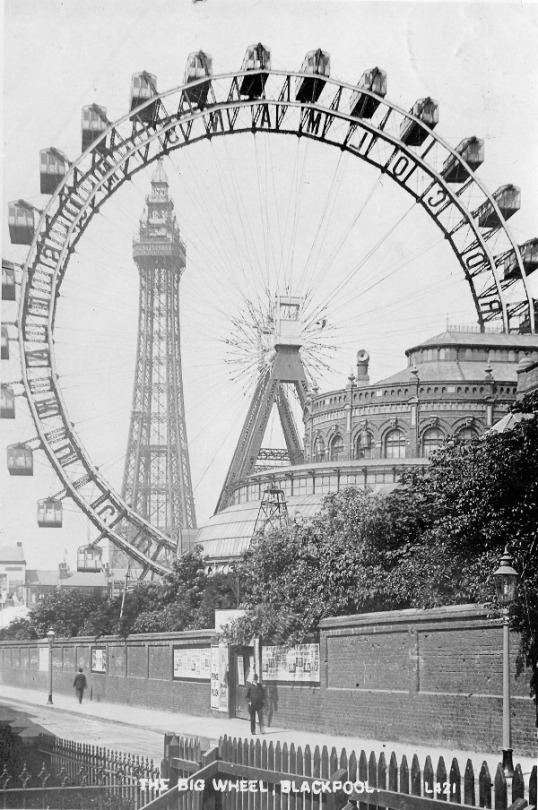
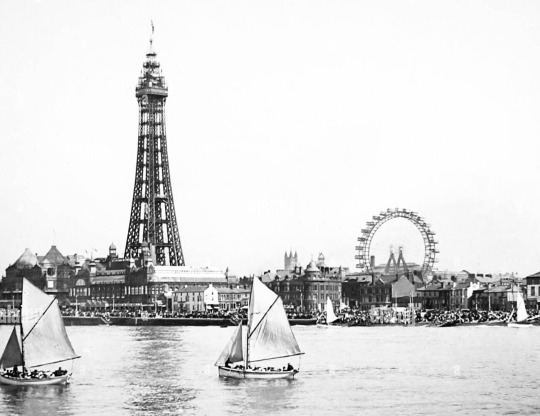
To start, there's two distinct landmarks seen outside of Pluto's window which are the Blackpool Tower, and presumably the Blackpool Giant Wheel. The Blackpool Giant Wheel is what holds signifance in regards to the time period episode 83 takes place in. The wheel was closed in October of 1928, with demolition had started in November of the same year.
Meaning that this episode would have taken place at the latest, October of 1928.

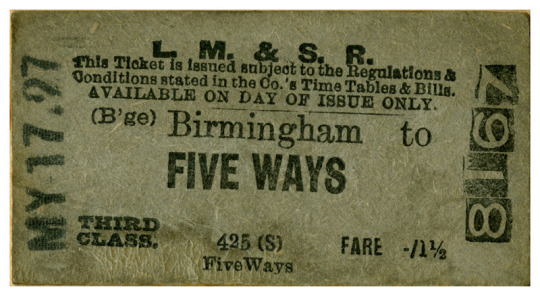
The train ticket Pluto holds, beside it is a real life train ticket from the same line, the LM&SR. This railway was established in January of 1923, this also includes the specific line connecting between Blackpool and London. This would put the earliest Pluto had been alive in the beginning of 1923.
Even though the real life train ticket is from 1927, it shouldn't be taken as evidence of when the episode took place
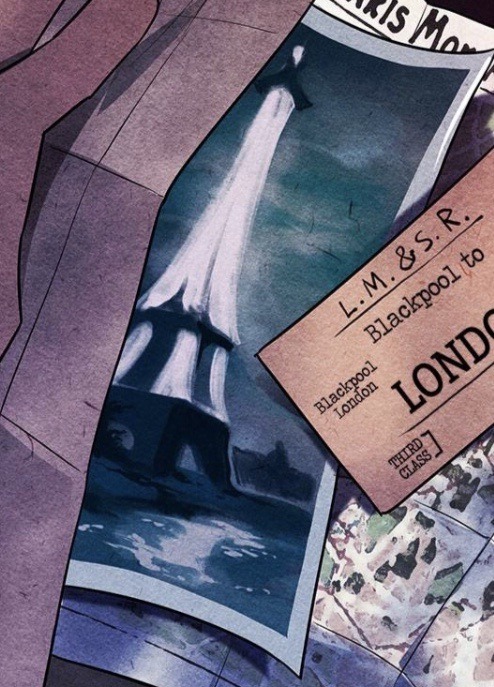

The photo of the Eiffel Tower Pluto holds also resembles real life photos of the Eiffel tower from the 1920's.


Lastly Pluto is shown holding a box of Black Cat cigarettes. While this particular brand was around long before the 1920's, they were incredibly popular during this time up to the 1930's. This is also a nod to the story Pluto is based on, The Black Cat.
With that, the time period would be narrowed down to January 1923 at the earliest, and October 1928 at the latest.
#nevermore webtoon#pluto nevermore#yes this is the one in the nevermore discord#im the one who wrote it#i shouldve posted this a month ago but shhh
268 notes
·
View notes
Text
Hazbin Hotel redesign ideas p. 2
I am a bit of fashion, especially men's, history nerd, and I'm also a bit of radio nerd, so here I go, biblically accurate Alastor.
ALASTOR:
Alastor was a radio host (a radio star?) who lived and died in Louisiana. He was shot during a hunting accident, in the head, somewhere in the 1933, during radio's golden era. He cares greatly about his image and always smiles to show no weaknesses. He hates modern technology and doesn't allow his face to be captured by video recording or non black and white camera. His is mixed-race Creole.
Nothing about Alastor design make sense and it pisses me off. Not only it doesn't fit the time, it also doesn't fit his character! Besides, he is too red. He disappears into the background, especially walls of the Hotel.
Alastor cares about his image greatly, yet his clothes are torn. He is supposed to be like Hannibal, yet he looks like an edgelord wannabe. It's awful. I learned nothing about him from his design, other than "he's and old-time radio deer guy", and that's really bad.

Fashion in 30s was inspired by Hollywood, and sport and movies celebrities.
Back and white fashion in this period wasn't that different, at least for men, as long as you weren't poor, but here are some photos of specifically black fashion in 30s. In general I recommend that website if you want to look more into the fashion of this period.
His hair is completely wrong. And it's also really ugly lol. For richer black men a shiny straightening hairstyle was the go to since 1920s. One such style was "the conk" where one would chemically straighten their hair. It left hair shiny, but the process was painful and expensive. It literally could burn your scalp.
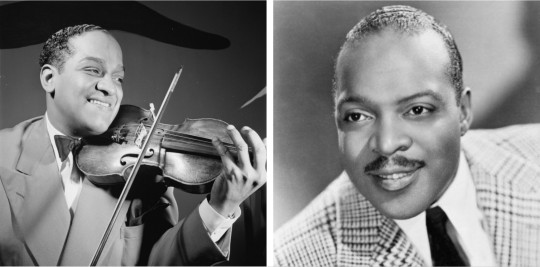
Another popular style was the brush wave. It's creating narrow waves rolling on top of head with the sides cut short and smooth. This hairstyle is still present to this day, but nowadays it's done on the whole head.
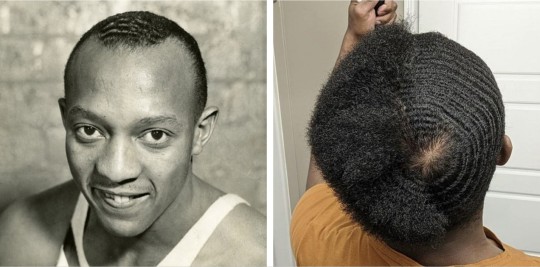
Other than that, men just wore their hair naturally, but short.
There is no focus on trousers or vest in Alastor's outfit. (Which is wild considering zipper fly was introduced in the early 30s, but was got popular by the mid ’30s). This was time of experimenting a bit with vests. If you wanted to look fancy and/or formal, you would wear a vest. Pants were wide legged, had a high waist and a single pressed line down the center of the leg. Some trouser waistbands were unique in the 1930s, for example a Hollywood waistband trouser. It had an extra wide band with a double row of buttons. They fit very high, overlapping the ribs. they often had netal ring tabs on the sides to tighten the pant to the correct fit without the need for belts or suspenders.

Also, monocle? Really? …Really? Here you go, read this if you're curious. Lots of pictures of glasses included. Glasses stayed essentially the same in 30s as they were in 20s. They were "round with a center bridge in the early years and an upper bridge in the later years. Frames could be tortoiseshell, black plastic, or thin metal."
Moving on from fashion, because I could never shut up, microphones!
The most probabale one that everyone who is redesigning Al is drawing is a good old classic Carbon mic. It looks like a ring with a metal star and the microphone inside. It can be hand held or a staff.

But, if you wanna draw something different!
Other than Carbon mic there is also a Ribbon microphone (first row) and Moving Coil mic (second row). Unfortunately, they killed Alastor in the best part of the radio golden age, so the mics are still a bit ugly, not gonna lie.
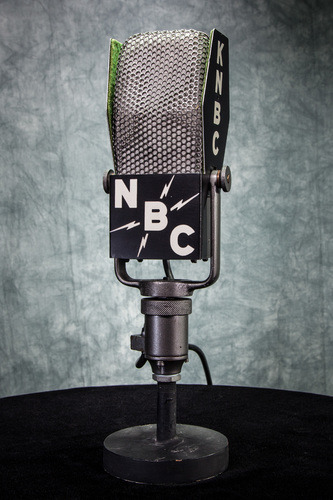
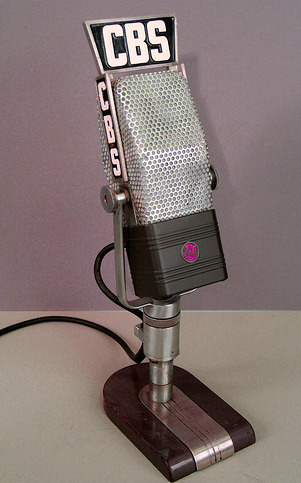
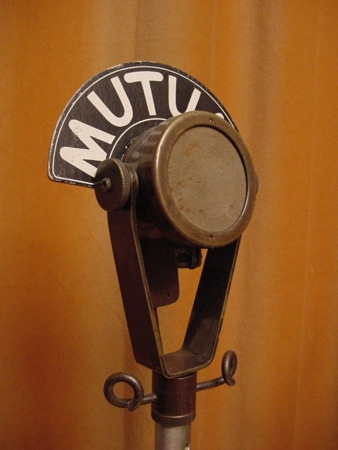

How would I design him:
First things firsts, either he is mixed or he is white, because right now it just feels like a cheep excuse to have an "evil voodoo" character without getting too much backlash. Let's be honest, nobody thought he was a POC and that white face doesn't help. Again, just like I mentioned with Vel, when you're drawing a character with human like skin tone you have to be careful and think how it ties to their race.
Second - fashion. His outfit and hairstyle is a disaster. He has always tried to 'dress to impress', so obviously I would give him well maintained clothing and that 'high quality', formal style. I would give him the dark brown Hollywood trouser with buttons and dark crimson shirt, like dried blood almost. Under a coat or jacket he would have a brow vest, both the same colour as the pants. Highlights would be golden and green or purple. I for one would love to see him start out with a jacket/coat which he stops wearing inside the hotel after he bonds with the people inside it more, but he would still wear it outside and in the finale would put it on again, after his breakdown in the tower. This would show he began to trust the hotel residents a bit before he 'realises his mistake' after the battle. I would give him short haircut, because not even white people wore hair like that. (What in the Karen-core is it supposed to be?). Say goodbye to that monocle. Why is it even there there? Because he is old-timely? What is he, a children's cartoon villain? His design doesn't need more soulless clutter. Give me something that tells me about him as a character. I've seen people give him old radio as teeth or chest and I love it! When it's not too detailed, it's a great idea to make Alastor less like a living human but also less of… just a deer. He just looks like a deer demon. I would keep his shoes, hands and antlers, and give him ears that would fit the hairstyle I would go with.
[Edit: I forgot to mention, I would give him a time accurate hat or a free wavy lock of hair to cover the mark on his forehead where he was shot]
Thirdly, the microphone! My love. I remember the microphone used to be able to talk, but now it doesn't, unless I'm wrong, but I'm pretty sure. Now it's just a weird look staff microphone with an eye and that's about it. But imagine something like a moving coil with the metal sign on top of it were the letters on it change. It could be a way it's communicating, in a simple way. This was it could still have a unique shape. That would have been fun to see. I can certainly imagine it being something of an 'unfiltered voice' of Alastor, where it would change it's writing into "Shut up", "Die" or something like that and he would hit it in a reprimanding way to reverse it to "Smile!". I'm just saying, that's a cool idea.
Well, this took forever to make, I actually forgot about this, so it just sat in my drafts. Anyway, if you want to see brilliant use of costumes and detailed, accurate depiction of fashion (especially black and queer) through history in New Orleans I recommend "Interview With The Vampire" (2022). It's also a great show.
#hazbin hotel#alastor#hazbin hotel alastor#hazbin alastor#hazbin hotel redesign#hazbin hotel fanart#redesign#hazbin hotel criticism#hh#hazbin hotel critical#hazbin hotel critique#men's fashion#men's style#menswear#mensfashion#fashion#fashion history
75 notes
·
View notes
Text
Claudia's Hair & Growing Up
I've written previously about how Claudia's wardrobe signals a shift from her childhood self to her adult self but the most clear and obvious marker of her self-perceived adulthood is her hair. In the early 1900s, a girl was allowed to have her hair down or in a half up do until about age 17-18 or when she made her debut into society. After that, when appearing in public spaces, she would be expected to have her done up (and also wearing a hat).
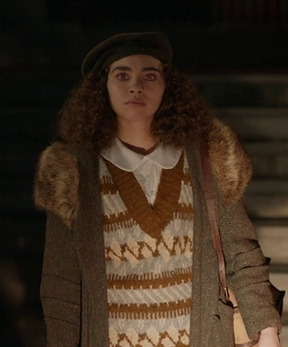
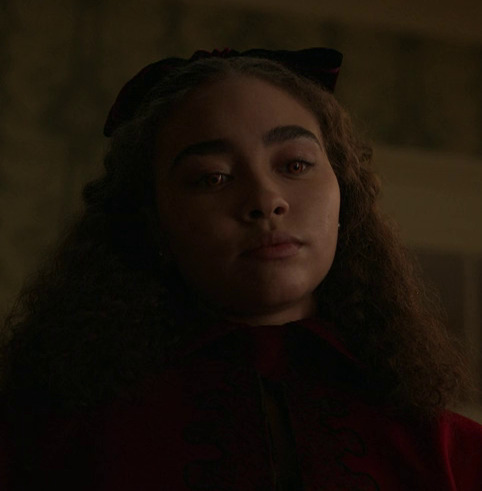
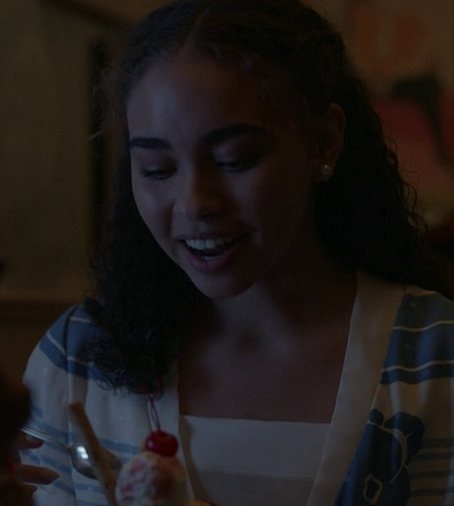

As you can see in episode 4, she has her done in the typical style of a young girl in the 1910s, ornamented with a bow or some other decorative ribbon. In fact, this is one of the clearest indicators to people like Charlie and the guy at the university that she's really young even if she claims to be older. This is a childhood/early adolescent hairstyle and an adult woman would not have worn it out and about.
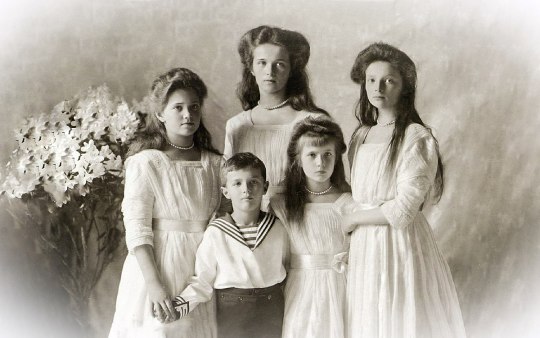
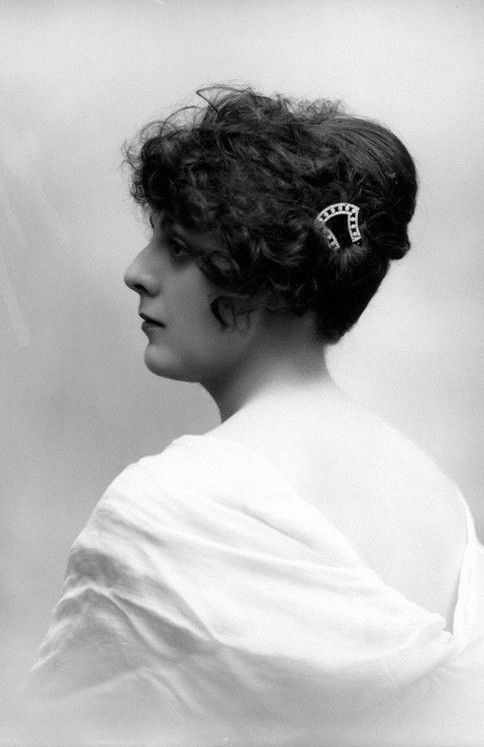
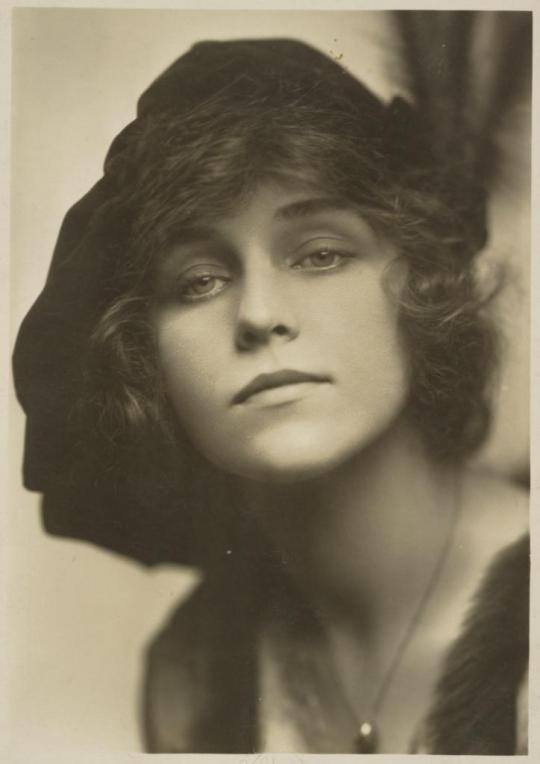
In the first photo above are the Romanov children with the girls between childhood and early adolescence. Below that, you have adult women in the 1910s with their hair done up and on the right wearing a large hat when out of the house.
However, an interesting shift happens in the 1920s that coincides with Claudia's coming of age and while it's not explicitly explored in the show, it likely compounded Claudia's frustration at her inert physical state. The 1920s was the beginning of VERY short hair becoming popular with women, so instead of marking your adulthood by putting your hair up, many would simply chop off their hair into a flapper bob.
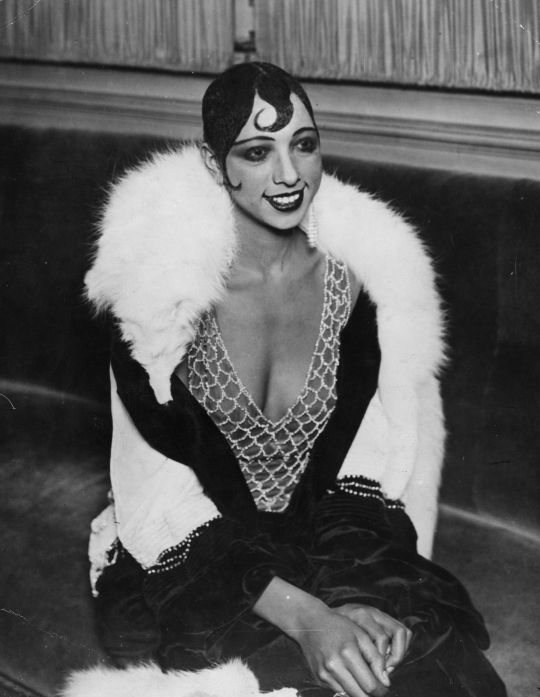

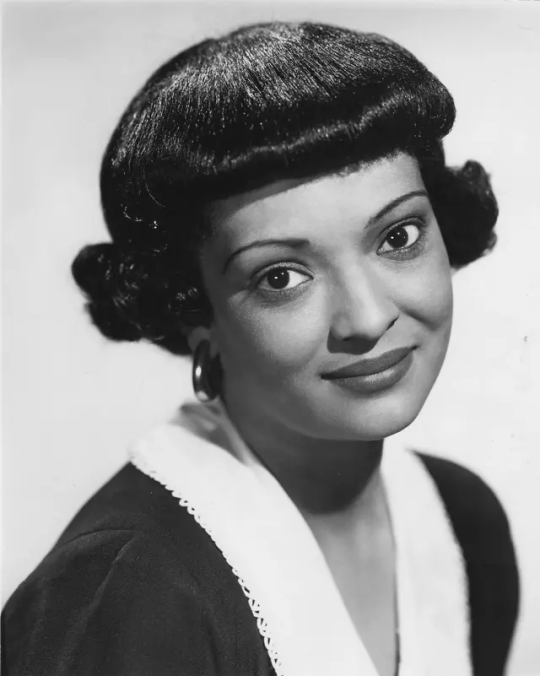
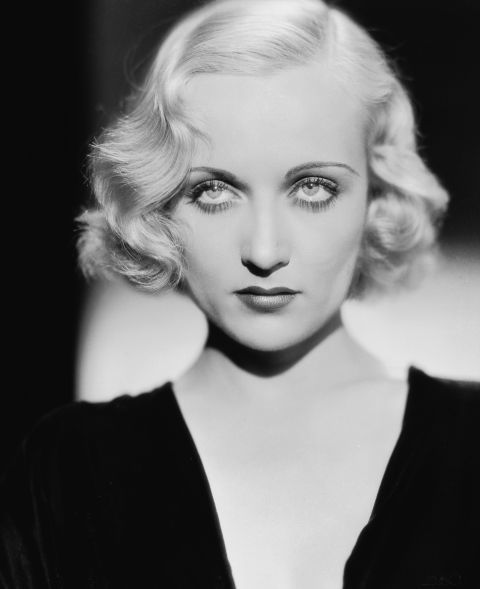
But Claudia CAN'T cut her hair. It would just grow back so not only is her body in arrested development but she can't even style her hair to the adult woman trends of the era. She's not only stuck in a 14 year old's body but she's stuck with a 14 year old's hair length from the year 1917. So what does she do? After episode 5, she almost always wears her hair up especially when out in public and when she is trying to project maturity (anatonizing Lestat, buying things at the pharmacy, meeting with Tom Anderson). While she may not be able to cut her hair to match the trends of the 1930s woman, she CAN at least put her hair up like a 1917 woman. It's literally her one way of controlling her appearance beyond how she dresses.

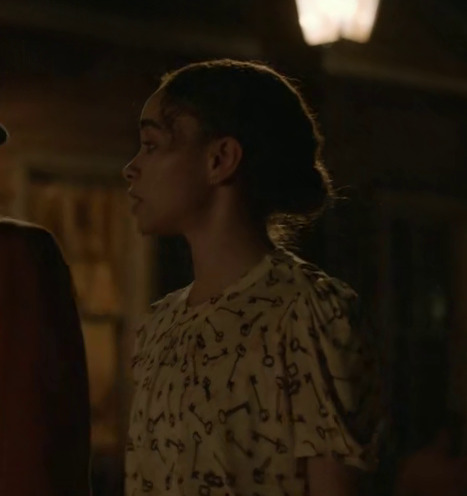


Final note: while the show in general has pretty accurate and well developed styling choices, the one glaring exception is Antoinette. She's really not styled properly for any era she appears in and I know her looking 35 years old for 30 years is a bit of a joke in fandom but truly her hair is just NOT it. It's way too short for 1917 (needs to be updo capable!!) and kinda too long for the 20s-30s. They really just did not care about styling her accurately at all and ykw that's okay cause she doesn't really matter lmao.
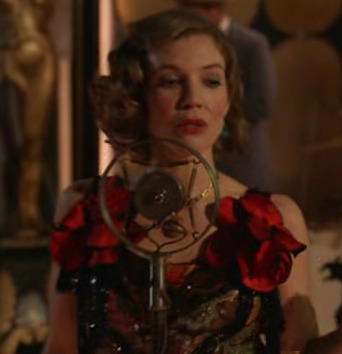


Like look at these from the years 1917 and 1937 and then look at the styles I posted above of the 1910s vs. the 1930s and like????? what is going on here lady!!! You're just not trendy in any era hon.
#iwtv#costume analysis#i hate this fandom i didn't even wanna post this#but i did it for claudia#also pls feel free to add any additional info on hair textures and stuff!!
276 notes
·
View notes
Text

Hi, I'm Amy AKA The Simline.
From the first time I saw Singin' in the Rain as a kid I've been costume obsessed, and The Sims helps me channel that nerdery into CC curation and lookbooks influenced by history, television, movies, current events and all manner of creative inspiration. Because I cover such a broad range of styles I thought I'd gather everything into a pinned master post for ease of navigation.
I'm really happy to have you here and I hope you enjoy your stay!

Medieval ✺ Renaissance ✺ Tudor ✺ Baroque
Georgian ✺ Rococo

1300s ✺ 1400s ✺ 1500s ✺ 1600s ✺ 1700s
1800s

1890s ✺ 1920s ✺ 1930s ✺ 1940s ✺ 1950s
1960s ✺ 1970s ✺ 1980s ✺ 1990s

HISTORICAL (1300s to 1800s)
Historical CC Finds ✺ Historical Lookbooks
DECADES (1900s to 1990s)
Decades CC Finds ✺ Decades Lookbooks
MISCELLANEOUS
Portraits ✺ Magazine Covers ✺ No CC
Modern CC Finds ✺ Modern Lookbooks

Adventure ✺ Barbiecore ✺ Halloween
Movie Inspired ✺ Pop Culture ✺ Sci-Fi

CAS LIGHTING
CAS Overhaul v2 by Luumia
CAS BACKGROUNDS
Photos - CAS Backgrounds by Shasims
Cutouts - Chroma Green Background by Luumia
CAS ANIMATION CONTROL
Stand Still In CAS by Helgatisha
CAS Tuning - Controlled Position Mod
SIMS APPEARANCE
Matte Smooth by Emmi Bouquet
EA Eyelashes Remover by Kijiko
IMAGES
Photo Editing - Adobe Photoshop & Lightroom
Graphics - Adobe Illustrator
HISTORICAL RESEARCH
The Chronicle of Western Costume by John Peacock
Fashion History Timeline
DEAD LINKS
I check all my posts for dead links every three months (deleted files, deactivated creators, etc) as I personally find it really frustrating when I find some great CC, only to discover the download link no longer works. If you find a dead link in any of my posts please feel free to shoot me a message so I can update the post and provide you with a working download link (if I can find one).
208 notes
·
View notes
Text



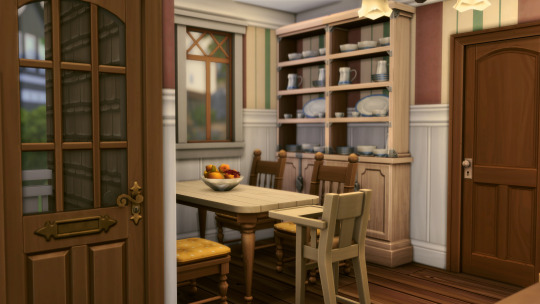





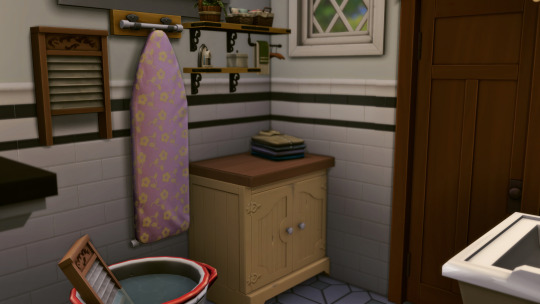

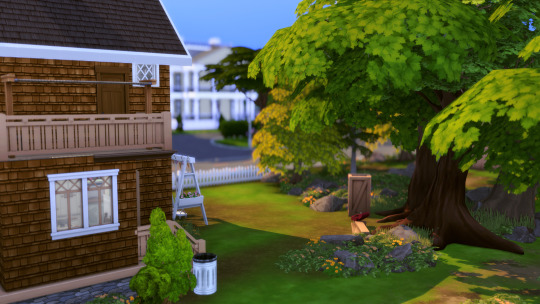
The Barrington
A CC Free 1920′s & 30's Sears Roebuck Catalog House
Lot size: 30x20
Price: §73,554
Lot type: Residential
Location: Parkside Place, San Sequoia
When I got my hands on Growing Together I had to make a house for my little play through family. I'd been itching to make another one of these kits houses for a while, so off I went searching and found these plans!
More details and download under the cut:
If you don't know, the Sears Roebuck Kit Houses were houses that could order from the Sears Roebuck Catalog. The lumber and fixtures would be delivered to you and you or someone you hired would build it. This might sound like a recipe for disaster, but these houses are still standing today and highly sought after. It's one of my favorite parts of American architectural history.
I wanted to make a 30s inspired house since I got those vibes from this pack, and this plan was available from the late 1920s to the mid 1930s. I immediately fell in love with the ridiculously pointy front part (which houses a closet on the second floor).
It took me a minute but I'm now a huge fan of a lot of the build buy in this pack, the kitchen appliances are darling, and as a shingle lover, having this siding is a dream come true.
The house is furnished for the 1930s with a living room, dining room, kitchen, creepy basement with coal boiler, master bedroom, nursery, children's room, and a bathroom/laundry room.
The build is fully playtested, the chimneys do make it a bit smokey when the fireplace is lit, so if that bothers you, just replace with a wall and brick siding in place. I like the way it looks and couldn't bear to part with them. As always make sure move objects is on when placing.
I hope you guys really enjoy this build, because it might be my favorite that I've made yet. If you use it and post pictures please tag me, I'll always reblog your photos, I love seeing them!
Available on the gallery as The Barrington by antiqueplumbobs.
Tray files available SFS | Google Drive
@twentiethcenturysims @maxismatchccworld @mmoutfitters
#ts4 build#sims 4 build#ts4 vanilla#sims 4 vanilla#cc free#cc free builds#vanilla builds#ts4 decades challenge#sims 4 decades challenge#decades challenge#sims 4 historical#ts4 historical#my builds#antiquatedbuilds#antiquatedresidential#searskithouse
292 notes
·
View notes
Photo

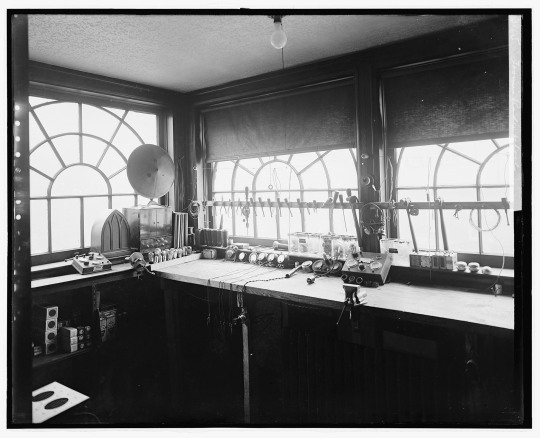
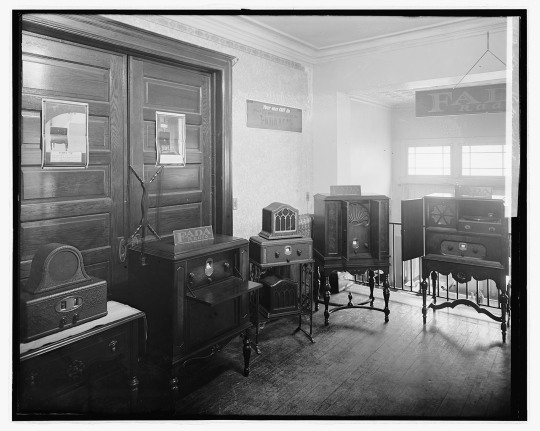
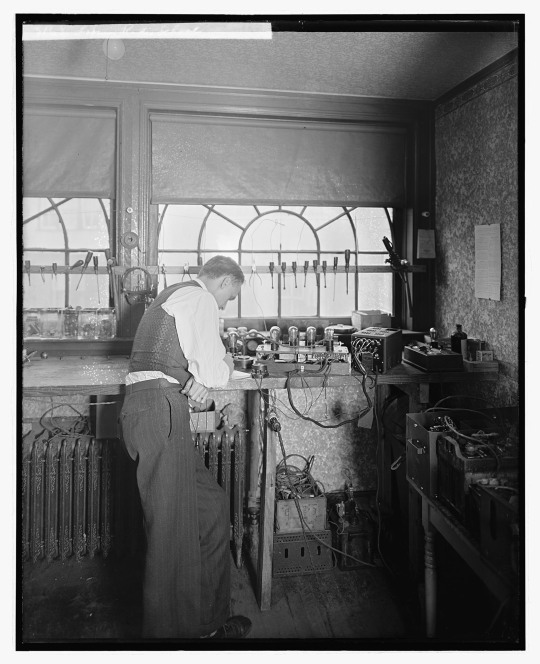
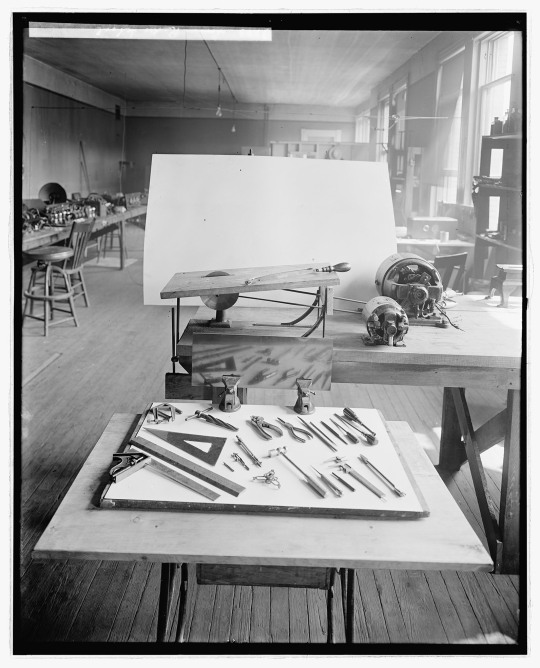

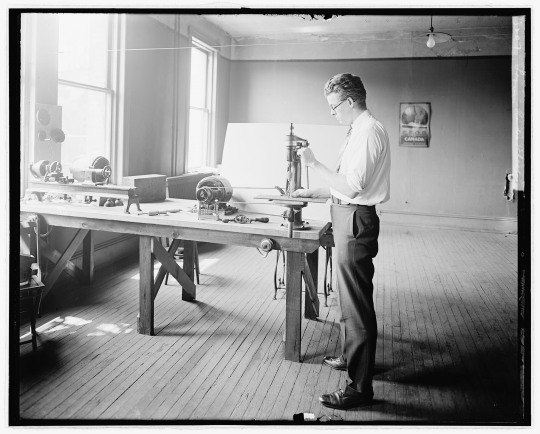
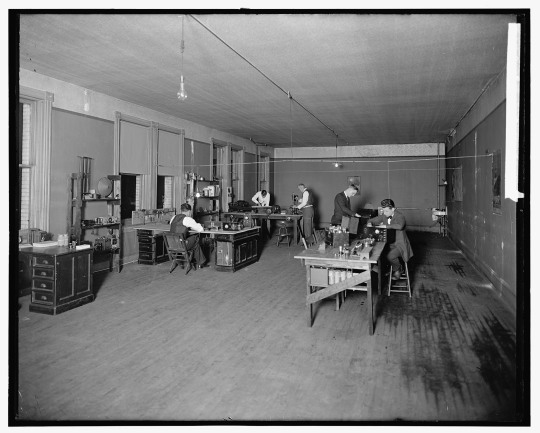
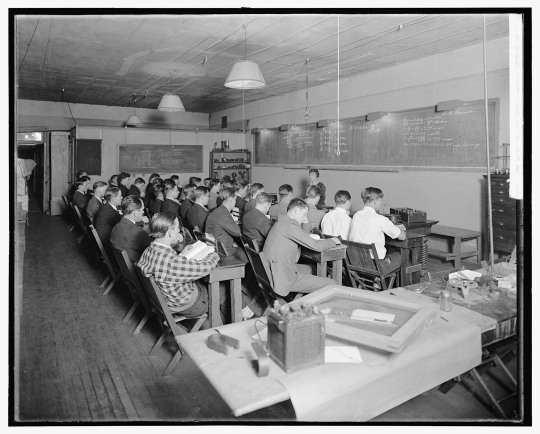
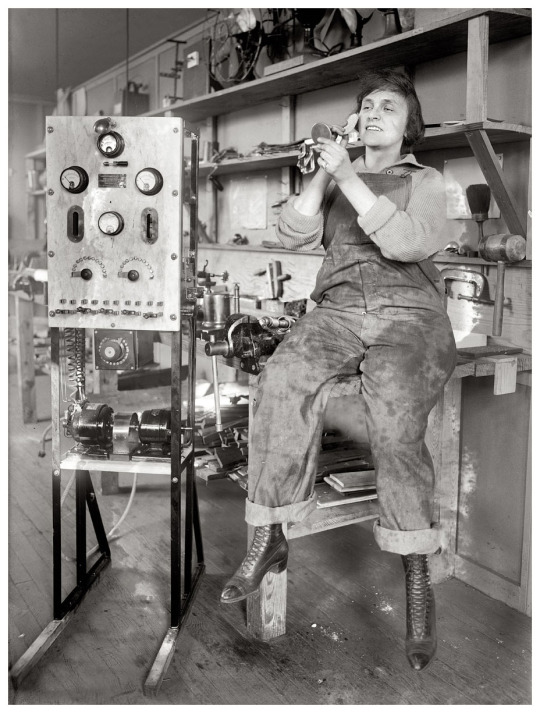
The Loomis Radio School, Washington D.C. ca. 1921.
The school was located at 401 Ninth St. N.W. and operated with the call letters 3YA. By 1920 it was offering a six month course enabling the graduate to obtain a first grade commercial radio license and by January of 1922 was offering a four year course with a degree in Radio Engineering bestowed on graduates.
The school was founded by Mary Texanna Loomis, pictured in the last photo.
Born August 18, 1880 near Goliad, Texas. She was the second child born to Alvin Isaac and Caroline (Dryer) Loomis. Though born on homestead in Texas in 1880, by 1883 her parents had returned to Rochester NY and then on to Buffalo where Alvin became president of a large delivery and storage company. Little is known of her early years, but appears she had a fairly middle-class up bringing. She seemed well schooled, with an early interest in music and language (she mastered French, German and Italian) Her early years were spent in Buffalo, NY and she later relocated to Virginia.
During the early years of World War I, she became interested in the new field of wireless telegraphy. There was a family precedent; her cousin, Dr. Mahlon Loomis, had conducted early wireless experiments with moderate success and may in fact have been the first person, in 1865, to send and receive wireless signals.
Mary soon became proficient enough in wireless telegraphy to be granted a license by the United States Department of Commerce. Thoroughly fascinated with the field now called “radio”, she decided to turn her expertise into a career. Also, she wanted to do something that would honor her pioneering ancestor. Her idea was to do this by founding a radio school.
Though radio was indeed, for many years, a profession dominated by men, Mary Loomis around age 40 took no notice and in 1920 founded the Loomis Radio School in Washington, D.C. and it quickly gained an excellent reputation. Ms. Loomis set high standards for the school and it attracted students not only from the United States but Europe and Asia as well. Loomis enjoyed teaching as much as she enjoyed radio itself. In an interview, she said, “Really, I am so infatuated with my work that I delight in spending from 12 to 15 hours a day at it. My whole heart and soul are in this radio school.”
As president and Lecturer of the Loomis Radio School, Mary authored a definitive book on radio, named “Radio Theory and Operating.”
By January 1922 the school was offering a four year course with a degree in Radio Engineering bestowed on graduates. Loomis also intended that her students understand more than just the inner and outer workings of radio. In addition to a radio laboratory (with equipment constructed almost entirely by Mary herself), the school maintained a complete shop capable of teaching carpentry, drafting and basic electricity. She reasoned that many of her graduates might find themselves at sea, or in other challenging situations and she wanted them adequately prepared. “No man,” Ms. Loomis said, at the time, “can graduate from my school until he learns how to make any part of the apparatus. I give him a blueprint of what I want him to do and tell him to go into the shop and keep hammering away until the job is completed.”
The school appears to have been in existence at least through the early 1930's, but it has not been possible to find information after that.
In an interview given to H.O. Bishop of the Dearborn Independent in 1921, Mary was asked: “What sort of young men are taking up the radio profession?” to which she replied:
“The Kind who have grit and want to get there! Virtually all of them are ambitious and enthusiastic over the possibility of visiting every nook and corner of the world. My students are not only enrolled from various sections of the USA and Canada but from many foreign countries, such as Sweden, Ireland, England, Poland, Russia, Austria, Rumania and the Philippines. One of the brightest pupils I ever had was Prince Walimuhomed of Far-away Afghanistan. He was an extremely modest young man, keeping his real identity a secret until after graduating. He said he had no idea of earning his living by working at radio, but just wanted to know all about it. He does.You have no idea how much happiness I get out of the success of each individual graduate. My boys keep in touch with me from all parts of the world. Scarcely a day goes by that I do not get some trinket or postcard from some remote section of the world. I have made the wonderful discovery that the only way for me to get happiness for myself is to make some one else happy. I find that I am making these young men happy by teaching them every phase of the radio business so that they can earn a comfortable living for themselves and their dependents and at the same time, see the great big beautiful world.
As far as we can figure out, Mary Loomis left Washington D.C. around 1935 and moved to San Francisco where she worked as a stenographer. She died in 1960 and is interred at Woodlawn Memorial Park, Colma, CA.
Source
144 notes
·
View notes
Text
How genealogy is used to track Black family histories
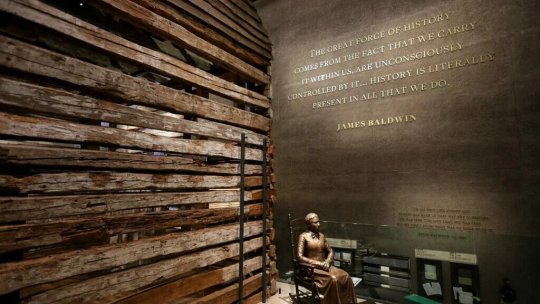
Our names are important to us. They tell us who we are and often, who we come from. So imagine suddenly discovering the last name you’ve always carried… might not actually be the name you should have.
Alex Neason began looking into her family’s history after discovering her great grandfather’s name was different from what she believed for her whole life. In her search to discover the story of that last name, she enlisted genealogist Nicka Sewell-Smith.
For Black Americans, genealogy can fill in the blanks left by the legacy of slavery and racism in the U.S. Services like the Freedmen’s Bureau and Slave Voyages provide free access to records and documents to help with that search. We talk about the power of genealogy in fostering knowledge and connection for Black Americans.
Source
If you click on the word “source,” it’ll take you to the article where you’ll see a LISTEN button. It’s a 30-minute audio that discusses the info provided in the article even further. Y’all know I’m big on getting people to trace their lineage. All that “we don’t know where we come from.” Who told you that? Everything in the US is in plain sight. Everything.
Discover your fam.
I assist others when they reach a roadblock, like getting past the “1870 wall.” But you can’t beat the feeling of you discovering them on your own. Unearthing your history, seeing photos, reading stories that were stored, and saying their names that haven’t been said for centuries. I’ve been tracing mine (scanning, logging) since my family reunion in 2005 through oral family history and obituaries (those are records), and since 2011 through databases of US archived records like ancestry.com (purchased by BlackStone) and familysearch.org (free database owned by the Latter-day Saints Church). There are others, but those are the main two I use for comparative results.
Archiving Centers, Census Records & Other Records
There are archiving centers in every state and DC that also keep records for those particular states and the federal capital. There’s a footnote on all records that tells you where they are housed. And please...Don’t just do a simple pedigree chart of your family tree. Get to know your great-aunts, great-uncles and cousins. It’s also helpful for seeing who lived around who (fam often lived next door to each other) and puts more of the pieces together of your complete family story. You can see the land and acres they owned or your fam today still owns, as well as if that land was stolen from them.
US census records go back to year 1790. Depending on when or if your ancestors were enslaved or free: you’ll find them attached to slave logs that have been made available online or kept in archiving centers (you go there), or or they’ll be listed on census records as free persons (1790-1710), free colored male/female (1820-1840), Black (1850-1920), Mulatto (1850-1890, 1910-1920) or Negro (1900, 1930-1950). “New” census documents are put on sites, like ancestry.com, every 10 years. As of 2023, you can only trace from 1950 to 1790. The 1960 census will be out in 2030. How to trace from 1950 to today, birth, death and residential records. So again, depending on the census year, you’ll notice your ancestors racial classification change throughout documents for obvious reasons.
Keep in mind that the the largest slave trade for the United States was the domestic slave trade. In house human trafficking and selling (in addition to property insurance of enslaved people and the selling of enslaved people as the building block of Wall Street’s stock exchange) is how US capitalism was built. So just because you know a lot of your people are from Tennessee, for example, it doesn't mean that’s where that line stayed. I’ve found my ancestors throughout 7 states (so far). Another example, people with Louisiana roots damn near always have ancestors who were trafficked from early Virginia. Going beyond year 1790, records were kept in Christian and Catholic churches and old family history books so most of those documents are scanned online and/or still kept in the churches. I’m talking books books.
If your ancestors walked the Trail of Tears, or were caught as prisoners of war or trafficked to Indian Nations to be enslaved, you’ll find an Oklahoma Indian Territory and Oklahoma Freedmen Rolls section on ancestry.com. You can discover more info on sites, like the Oklahoma Historical Society. (Every state has its own historical society for archived genealogical records.)
Here’s the National Archives.
Also for Oklahoma, you may also find your ancestors in Indian Census Rolls (1855-1940) as [insert tribe] Freedmen, depending if they weren’t rejected through the “blood quantum” Dawes Rolls for not being the new light to white status. You’ll see their application and the listed questions & answers with or without a big void stamp. And on the census, you’ll even see the letter I (pronounced like eye) changed to the letter B. This is also for those in Louisiana.
Freedmen’s Bureau & Bank Records
There were Freedmen’s Bureau records and Freedman’s Savings Bank records in other states. To see if your ancestors had their records in those systems, you can search by their name. The state and age will pop up with people having that name. It’ll give you a wealth of other info, like all of the kids and other fam if they were present or mentioned to the person who logged that info in. With the Freedmen Bank records, you can see how much money your ancestors put in there (that was later stolen from them by way of the United States government), which is still there today. It’s the biggest bank heist in US history (that they try to keep hush hush) with the equivalence of more than $80 million in today’s value stored in there today. Back then, it was valued almost close to $4 million. Stolen wealth met with bootstrap lectures.
Here’s a short video on that heist:
youtube
Today the bank is called the Freedman's Bank Building, located right on Pennsylvania Ave. Plain sight.
Trace your lineage.
There’s a lot more that I can list. But this is just the basics. Like I said before, it’s a more rewarding feeling when you discover your ancestors by yourself. You may reach roadblocks. Take a break. Try going the “Card Catalog” route on ancestry.com’s search engine. Don’t skip the small details.
SN: Slave Voyages isn’t a genealogical site, but rather a database for slave ship logs and the estimates of purchased Africans who became human cargo to be enslaved by country like USA, or by colonizers like Spain, Great Britain, etc.
#black americans#genealogy#lineage#ancestry#census records#freedmen's bureau#freedman's bureau#freedmen's bank#freedman's bank#american heist
162 notes
·
View notes
Text

Benard Jukes,who played Renfield on the stage play ‘DRACULA’ in the 1920′s lobbied for the film role,lost to Dwight Frye. But he did have some publicity photos taken. He appeared in only 2 films-the SAP FROM SYRACUSE (1930) and the TORSO MURDER MYSTERY (1939). Oddly-Jukes died young at age 40 in 1939,and Frye died in 1943 at the age of 44.
31 notes
·
View notes
Text

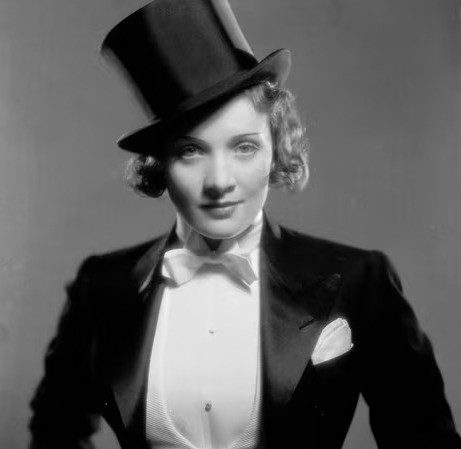
Propaganda
Kim Novak (Vertigo, Bell, Book, and Candle)— She fought as much as she could to be able to preserve her own identity within the crushing hollywood system. She refused to change her czech last name and fought for a higher salary once she discovered her male counterparts were getting payed significantly more, which was an incredibly risky thing to do. She went through so much hollywood bs like she was forced to drop her affair with Sammy Davis jr. She played her iconic role in Vertigo thinking about her own oppressive and significant changes she had to undergo in order to fit in the tight hollywood mold which i think is partly why the movie is so beautiful and timeless. She is a gorgeous soul and a great artist.
Marlene Dietrich (Shanghai Express, Witness for the Prosecution, Morocco)—Bisexual icon, super hot when dressed both masculine and feminine, lived up her life in the queer Berlin scene of the 1920s, central to the 'sewing circle' of the secret sapphic actresses of Old Hollywood, refused lucrative offers by the Nazis and helped Jews and others under persecution to escape Nazi Germany, the love of my life
This is round 4 of the tournament. All other polls in this bracket can be found here. Please reblog with further support of your beloved hot sexy vintage woman.
[additional propaganda submitted under the cut.]
Kim Novak:
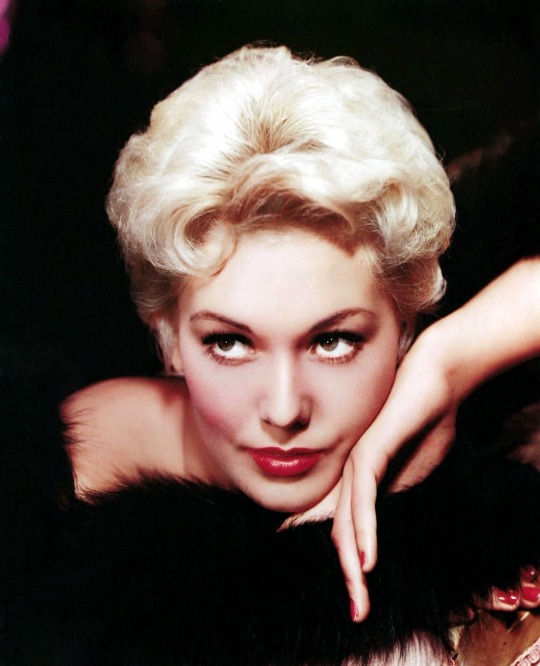
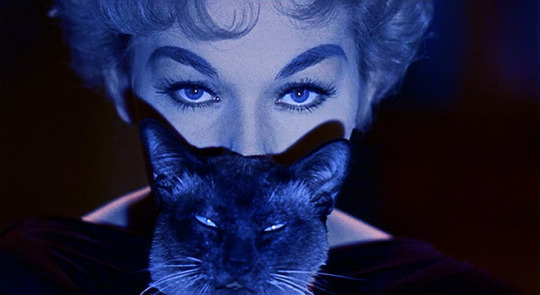
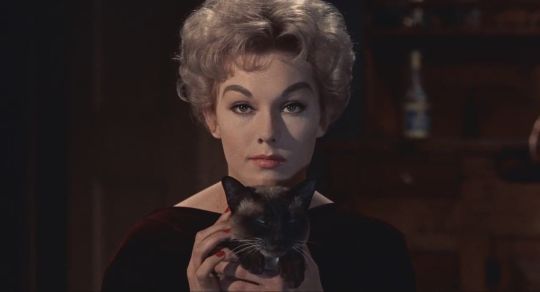

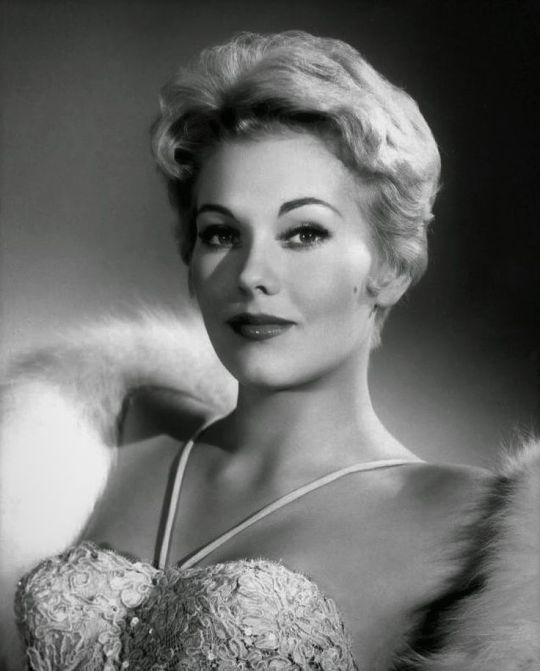
Marlene Dietrich:
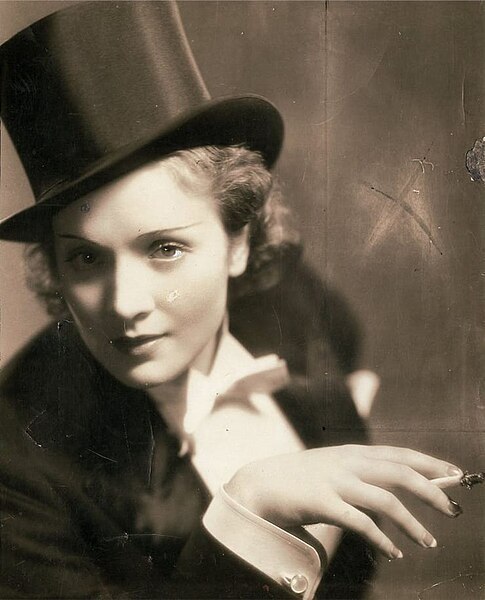
ms dietrich....ms dietrich pls.....sit on my face
its marlene dietrich!!!! queer legend, easily the hottest person to ever wear a tuxedo, that hot hot voice, those glamorous glamorous movies…. most famously she starred in a string of movies directed by josef von sternberg throughout the 1930s, beginning with the blue angel which catapulted her to stardom in the role of the cabaret singer lola lola. known for his exquisite eye for lighting, texture, imagery, von sternberg devoted himself over the course of their collaborations to acquiring exceptional skill at photographing dietrich herself in particular, a worthy direction in which to expend effort im sure we can all agree. she collaborated with many other great directors of the era as well, including rouben mamoulian (song of songs), frank borzage (desire), ernst lubitsch (angel), fritz lang (rancho notorious), and billy wilder (witness for the prosecution). the encyclopedia britannica entry im looking at while compiling this propaganda describes her as having an “aura of sophistication and languid sexuality” which✔️💯. born marie magdalene dietrich, she combined her first and middle names to coin the moniker “marlene”. she was a trendsetter in her incorporation of trousers, suits, and menswear into her wardrobe and her androgynous allure was often remarked upon. critic kenneth tynan wrote, “She has sex, but no particular gender. She has the bearing of a man; the characters she plays love power and wear trousers. Her masculinity appeals to women and her sexuality to men.” in the 1920s she enjoyed the vibrant queer nightlife of weimar berlin, visiting gay bars and drag balls, and in hollywood her love affairs with men and women were an open secret. she was an ardent opponent of nazi germany, refusing lucrative contacts offered her to make films there, raising money with billy wilder to help jews and dissidents escape, and undertaking extensive USO tours to entertain soldiers with an act that included her a playing musical saw and doing a mindreading routine she learned from orson welles. starting in the 50s and continuing into the mid-70s she worked largely as a cabaret artist touring the world to large audiences, employing burt bacharach as her musical arranger.
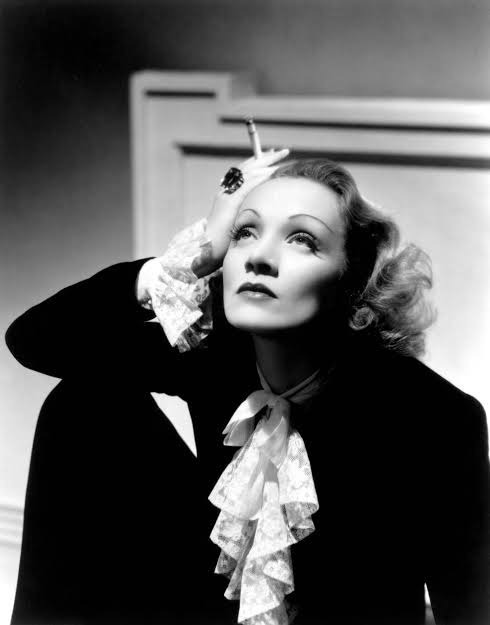
First of all, there are those publicity photos of her in a tux. Second of all, I have never been the same since knowing that she sent copies of those photos to her Berlin lovers signed "Daddy Marlene." Not only is she hot in all circumstances, but she can do everything from earthy to ice queen. Also, she kept getting sexy romantic lead parts in Hollywood after the age of 40, which would be rare even now. She hated Nazis, loved her friends, and had a sapphic social circle in Hollywood. She also had cheekbones that could cut glass and a voice that could melt you.
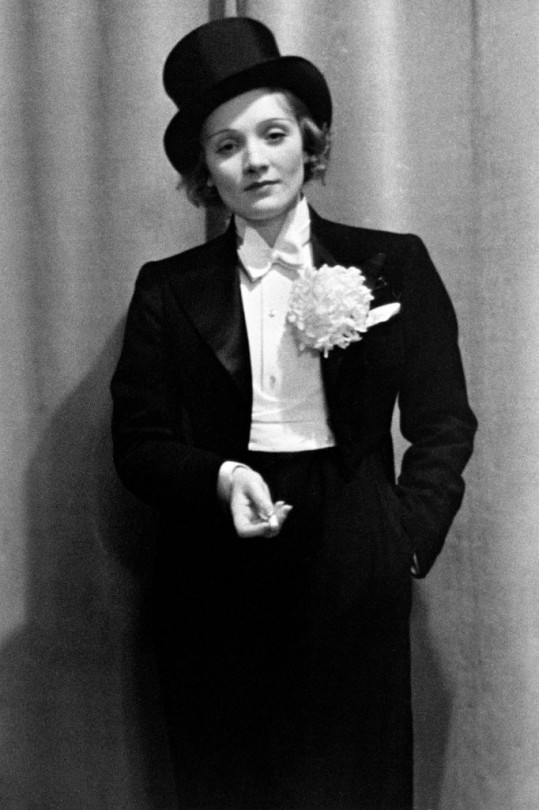
Her GENDER her looks her voice her everything

“In her films and record-breaking cabaret performances, Miss Dietrich artfully projected cool sophistication, self-mockery and infinite experience. Her sexuality was audacious, her wit was insolent and her manner was ageless. With a world-weary charm and a diaphanous gown showing off her celebrated legs, she was the quintessential cabaret entertainer of Weimar-era Germany.”
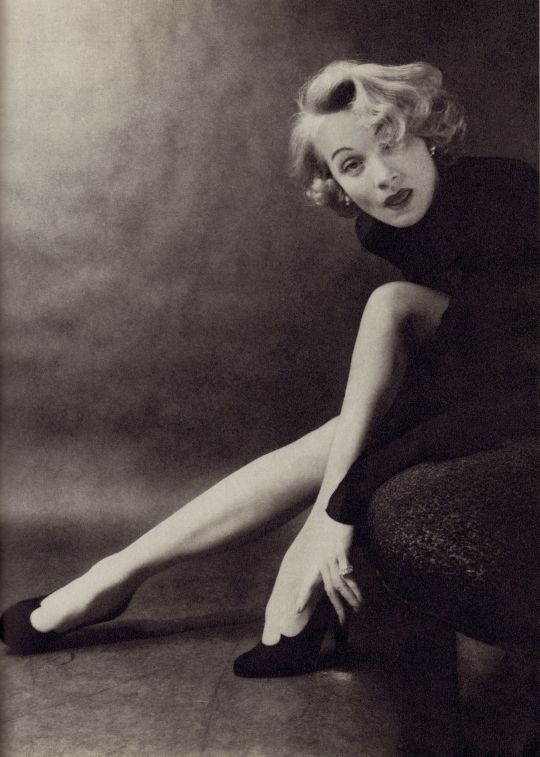
The bar scene in Morocco awoke something in me and ultimately changed my gender
youtube
"Her manner, the critic Kenneth Tynan wrote, was that of ‘a serpentine lasso whereby her voice casually winds itself around our most vulnerable fantasies.’ Her friend Maurice Chevalier said: ‘Dietrich is something that never existed before and may never exist again.’”
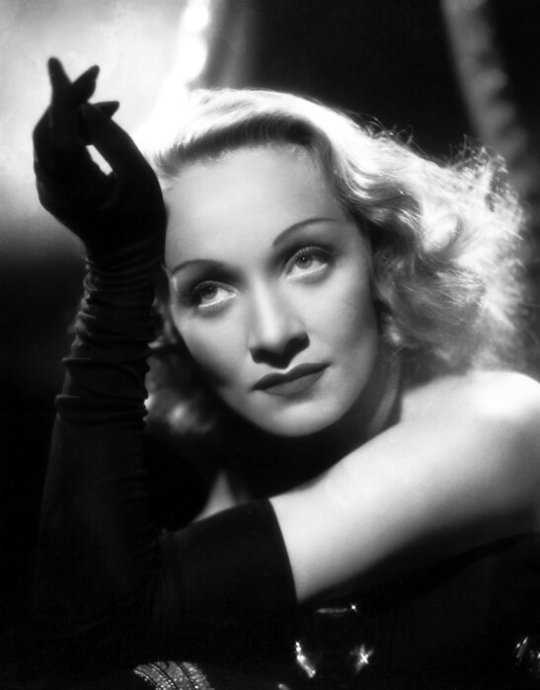
"Songstress, photographer, fashion icon, out bisexual phenom (notoriously stole Lupe Velez and Joan Crawford's men, and Errol Flynn's wife, had a torrid affair with Greta Garbo that ended in a 60-year feud, other notable conquests including Erich Maria Remarque -yes, the guy who wrote All Quiet on the Western Front- Douglas Fairbanks Junior, Claudette Colbert, Mercedes de Acosta, Edith Piaf), anti-Nazi activist. Marlene was a bitch - she had an open marriage for decades and one of her favorite things was making catty commentary about her current lover with her husband, and her relationship with her daughter was painful- but she was also immensely talented, a hard worker, an opponent of fascism and the hottest ice queen in Hollywood for a long time."
youtube
"She can sing! She can act! She told the Nazis to fuck off and became a US citizen out of spite! She worked with other German exiles to create a fund to help Jews and German dissidents escape (she donated an entire movie salary, about $450k, to the cause). She looks REALLY GOOD in a suit. If you're not convinced, please listen to her sing "Lili Marlene". Absolutely gorgeous woman with a gorgeous voice."
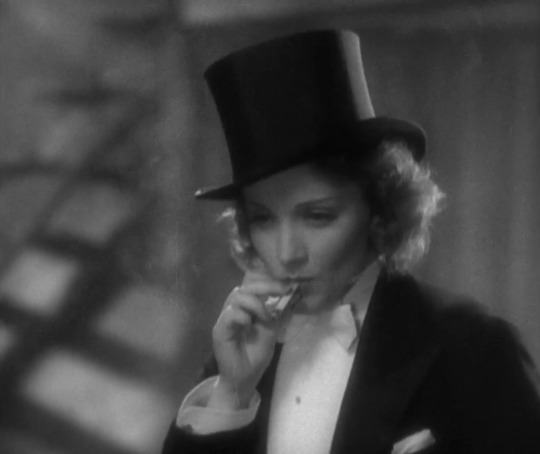
Gifset link
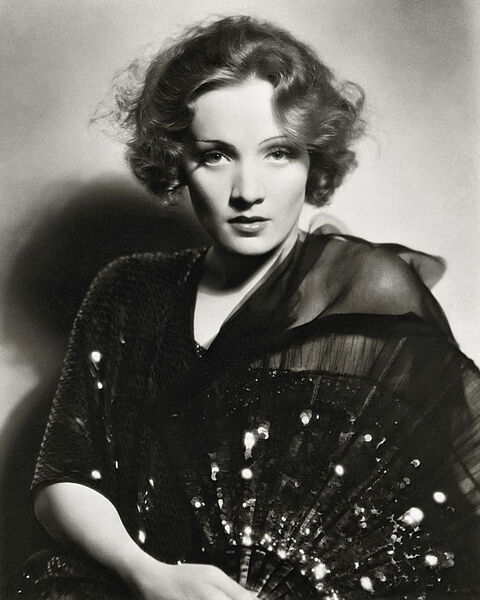
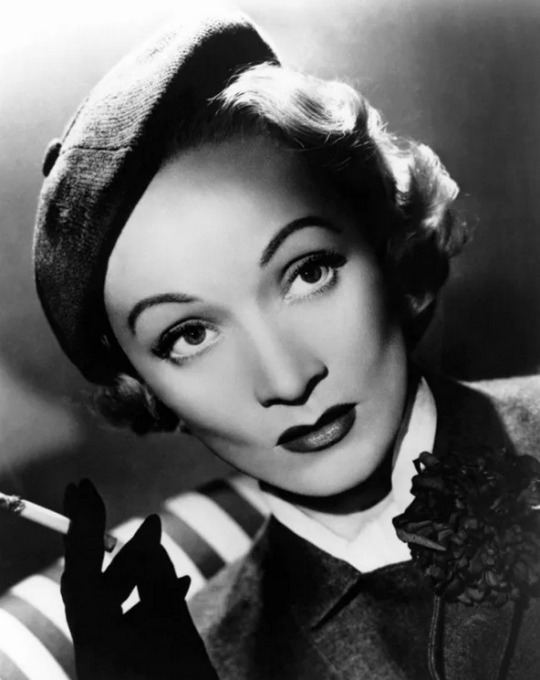
"Bisexual icon and Nazi-hater. Looks absolutely stunning in the suits she liked to wear. 'I dress for the image. Not for myself, not for the public, not for fashion, not for men'."
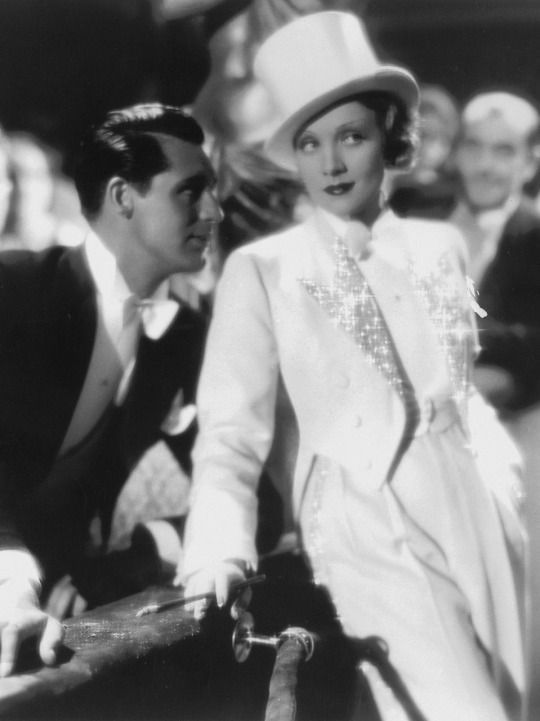
"would you not let her walk on you?"

234 notes
·
View notes
Text
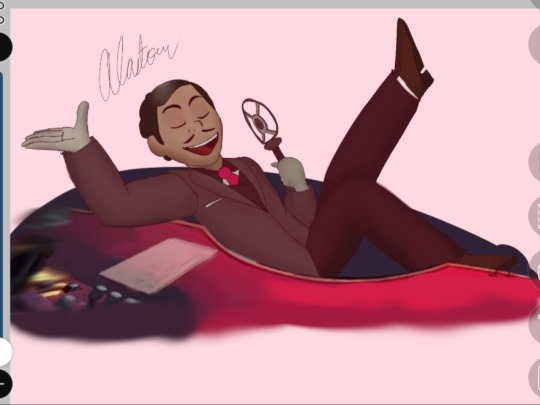
"He asked me to join his team, now he's pissy, that's the tea!"
A human Alastor, based on that one iconic pose, and my 1920s and 1930s obsession
Rambling about 1920s-30s views on blackness and hair and explanations of this design below the cut, as well as some head canons! (Or just enjoy the art lmao.)

Here's some history rambling!
(@weirdestarrow, you might like this)
In the 1930s, black folks were expected to straighten their hair to assimilate, popularly by using chemicals and products that basically destroyed the health of said hair. The "Conk" style was extremely popular for kinky-haired black men all the way to the 1960s.
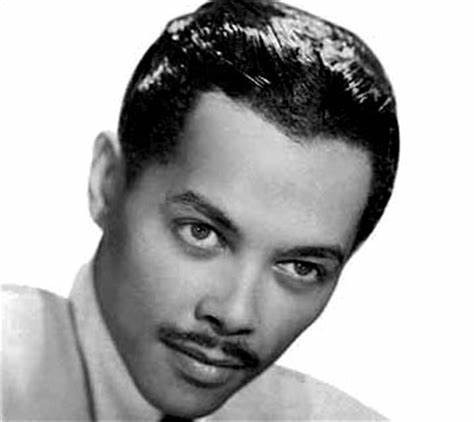
(This photo also gave me the idea to give him a moustache)
Alastor, to me, was the kind of person to constantly be pushing forward his white part. With racism and segregation rampant, there was very little chance a black man would own his own radio show in New Orleans, much less a famous one.
He'd imitate the transatlantic accent until that was his actual voice. His face was made for the radio, where no one could comment on it, and who knew what the real Alastor, the radio voice, looked like?
Although I love redesigns with curly/kinky hair, sadly, that's just not likely with Al's early 20's century sensibilities and upbringing. He would have been trying to hide any trace of his blackness in order to get that job. And considering that your life influences your demon form, I see Alastor's form being from him whitewashing himself so far that he quite literally erased that part of him.
This probably won't happen within show, and I am preparing myself to be disappointed in this regard, but I seriously hope we dive into something like that.
#hazbin hotel fanart#hazbin art#hazbin hotel#hazbin hotel headcanon#hazbin alastor#alastor#alastor hazbin hotel#radio demon#alastor hazbin#historically accurate hazbin hotel
38 notes
·
View notes